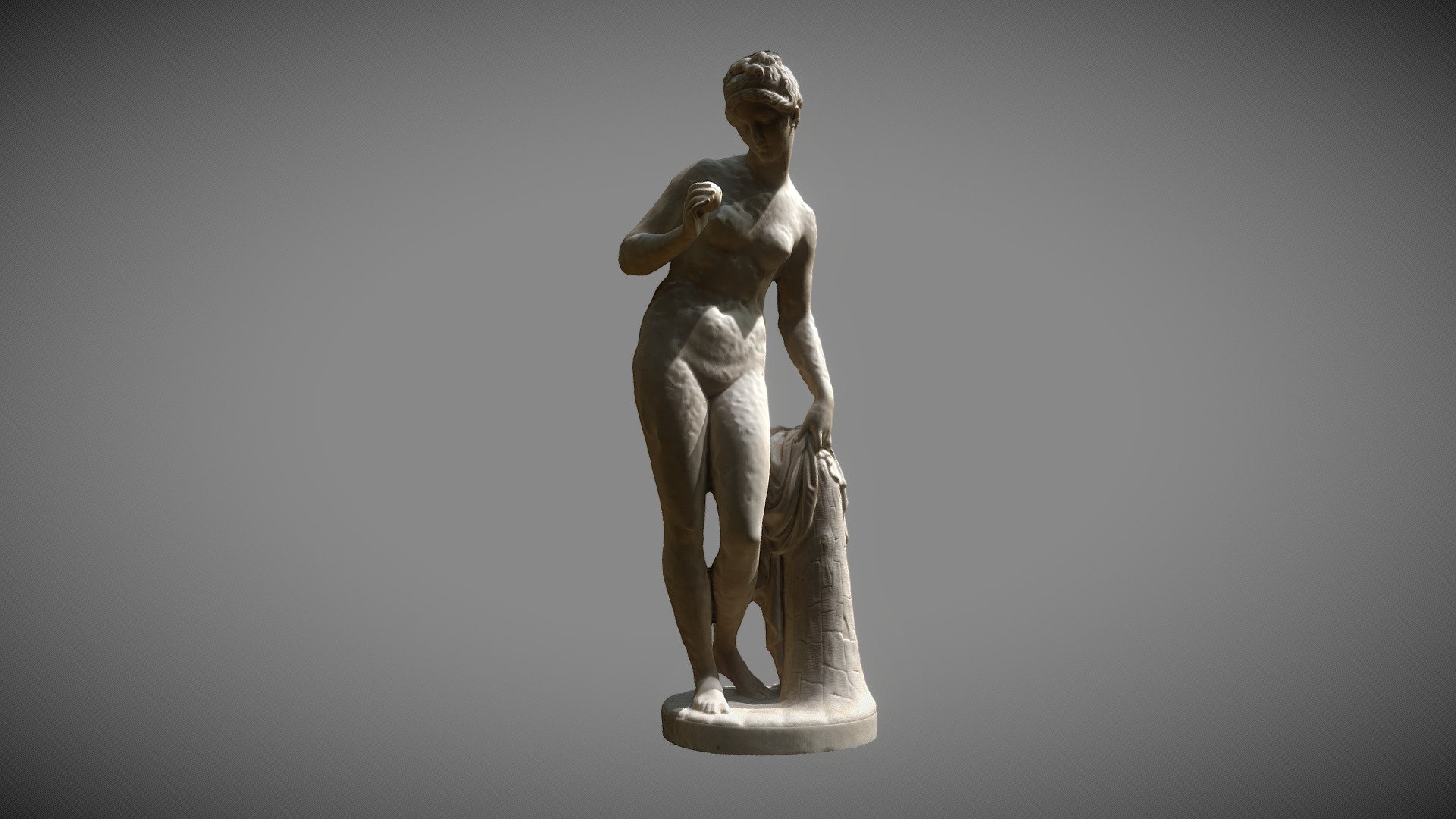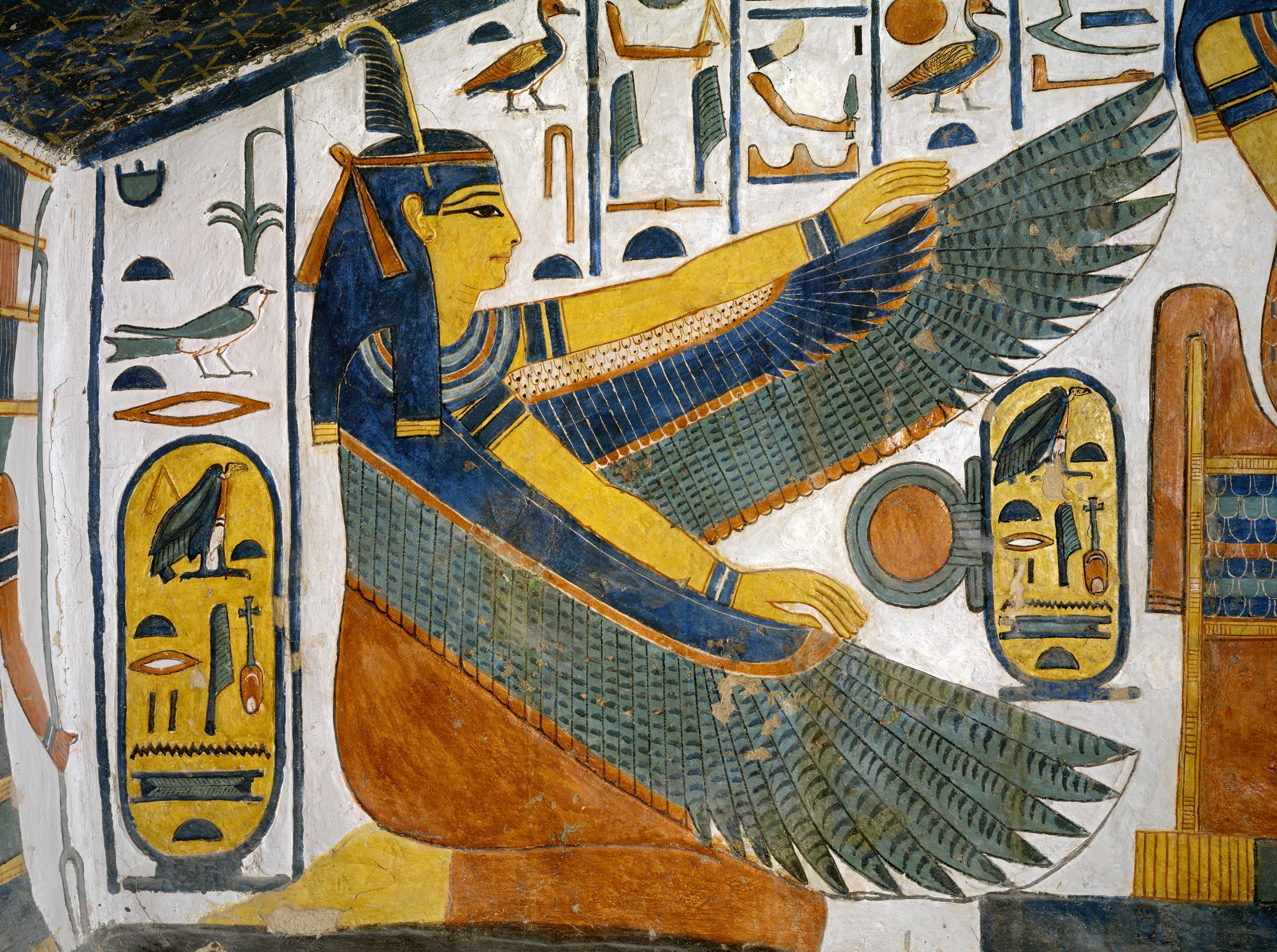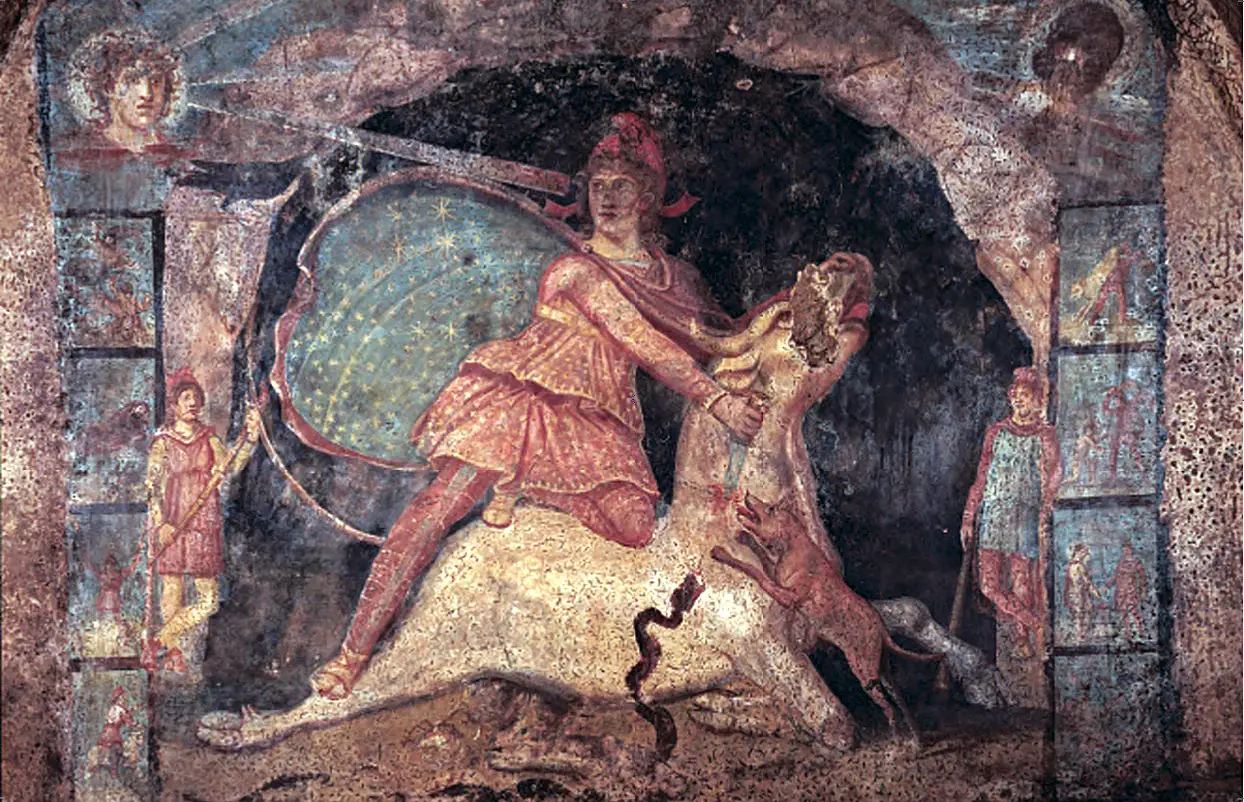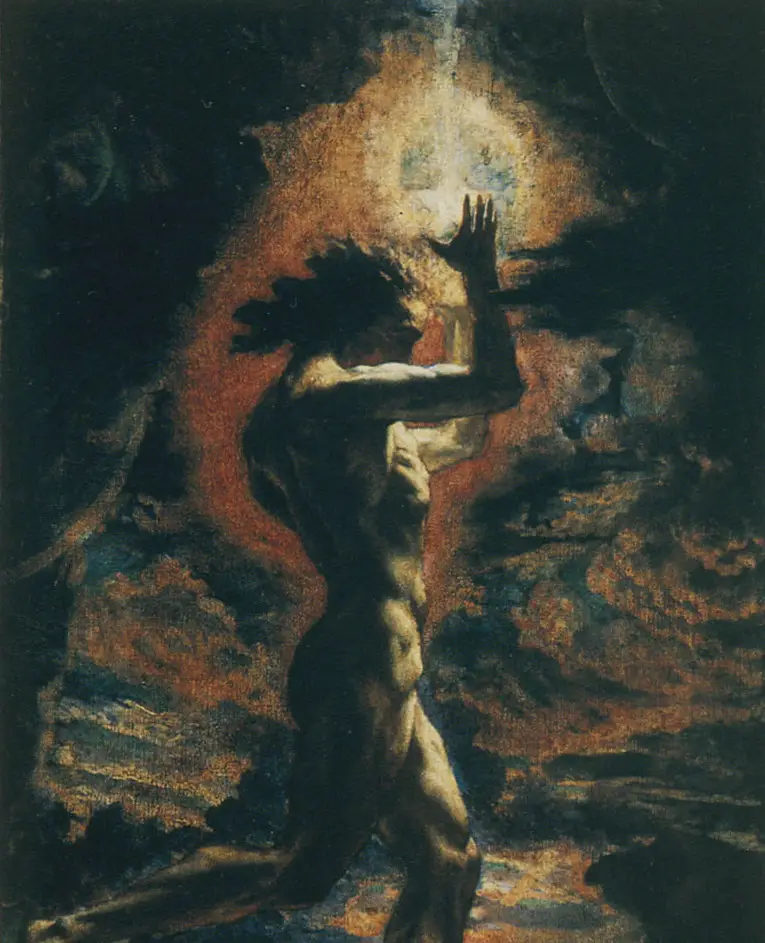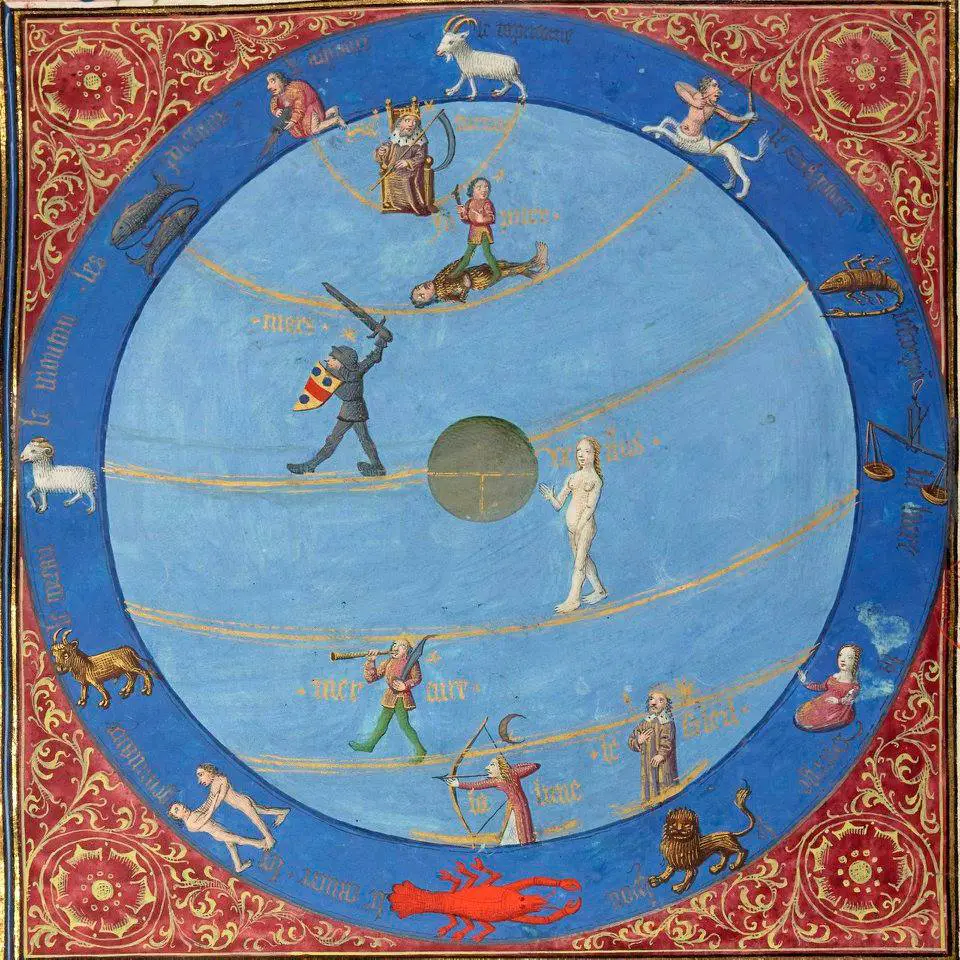Tag: Osiris
The fruit of infinity: meditations on Venus, the apple and the fig
What is the food of the soul? Or what fruits are born in the garden of the imagination? An adventure through the geography of the psyche, following the red thread of the apple, from that of Adam to that of discord, from the mists of Avalon to the celestial realms where Venus traces her star. An excursion through the heights and winding paths of the world of archetypes.
René Guénon: "Gathering what is scattered"
On November 15, 1886, the esotericist René Guénon was born in Blois, France. As a tribute to him, we propose the reading of an excerpt from his work, published posthumously, "Symbols of Sacred Science", which deals with the theme of the primordial fragmentation of the Universal Man (Purusha, Prajāpati, Osiris, Adam Qadmon) and of its final reintegration into its original state.
The humanism of the ancient Egyptians and its relevance (II)
In the two dimensions of Being for the ancient Egyptians, wnn (absolute existence) and ḫpr (the relative existence of individual beings), the spirit, the vital breath, ankh, acts, whose hieroglyph is the famous crux ansata; the other fundamental Egyptian cosmic principle was Maat, translatable as "Justice-Truth", "Order" or cosmic "Balance", as opposed to isft, chaos, disorder, degeneration.
The religions of mystery: soteriology of the Mithraic cult and of Attis / Cybele
(image on the side: affresco representing Mithra killing the bull, XNUMXnd cent. AD, Marino, Italy)
NIn the 50s, the Gnostic documents of Nag Hammadi, found immediately after the war in Egypt, made their entry into the academic world, and the need arose in the field of studies for a reflection on the material available and a rethinking of the categories into which they fell. the so-called mystery cults. The years between the 30s and 40s had already brought new materials and new research hypotheses: studies on pattern or mythical-ritual model inaugurated in England, which still felt the influence of Frazerian comparativism, "by now they were putting the theme of mystery religions in a broader perspective to consider them, one by one, in their ancient roots of national and ethnic religions - Crete, Egypt, Anatolia and the rest of anterior Asia, overcoming the limitation to mystical and soteriological cults of the Hellenistic-Roman age and in particular those relating to divinities of oriental origin»Such as Mithra (Persia), Isis and Osiris (Egypt, Rome), Cybele and Attis (Anatolia), Aphrodite / Astarte and Adonis (Phenicia, Greece) [From: U. Bianchi, The study of mystery religionsin The soteriology of oriental cults in the Roman Empire, Proceedings of the International Colloquium, Rome 24-28 Sept. 1979].
The "Heavenly Fire": Kronos, Phaeton, Prometheus
di Andrew Casella
cover: Jean Delville, Prometheus, 1907)
[Continued from The astronomical significance of the Golden Age: Astrea and the "fall" of Phaeton]
In a Mongolian wedding prayer it is stated that: "Fire was born when Heaven and Earth separated": Therefore, before the celestial equator (Father Heaven) and the ecliptic (mother Earth) moved away (ie the inclination angle of about 23 ° of the ecliptic with respect to the equator was recorded), the" Fire " did not exist. At the beginning, the Milky Way united heaven, earth and the world of the dead: the southern part of the Galaxy, in correspondence with Scorpio and Sagittarius, is, for many traditions, the place dedicated to the collection of souls waiting to reincarnate.
Stellar symbolism and solar symbolism
di Andrew Casella
cover: "The zodiac and the planets" by Bartholomeus Anglicus, taken from De proprietatibus rerum, Ahun 1480
[follows from Cyclic time and its mythological meaning: the precession of the equinoxes and the tetramorph e A Science in Tatters: Survival of the Doctrines of Cyclic Time from the Timaeus to the Apocalypse]
To resume the common thread of the images that we introduced in the first two appointments of this cycle, in the light of the previous considerations, it might be useful to quote a passage from Norse mythology.
Divinity of the Underworld, the Afterlife and the Mysteries
di Marco Maculotti
We continue the discussion previously developed, taking it from the connection that we have seen to exist, in ancient traditions, between the period of the "solstitial crisis" and the belief in the return of the souls of the dead to the living. The connection with the underworld / underworld and with the Kingdom of the Dead seems, as we have seen, to be recurrent for these deities that we have defined as 'of the Winter Sun' [cf. Cernunno, Odin and other deities of the 'Winter Sun'], at the same time gods of fecundity and also linked to the underworld and, therefore, to the deceased.
We have already seen that the Celtic Cernunno, in addition to being a god of nature and time, is also considered an underworld deity, especially as regards his psychopomp function, as a companion of the dead in the afterlife: a mercurial aspect that in tradition Nordic is also found, as we have seen, in Odin / Wodan, from which in fact derives the day of the week which Latin belongs to Mercury (Wednesday= “Wodan's days"). Likewise, in many traditions from all over the world there are numinous figures connected both with fertility and with the Underworld and the Underworld, starting with the Mediterranean Lord of Hades Pluto, among whose symbols there is the cornucopia (*krn), conveying abundance, fertility, wealth.


